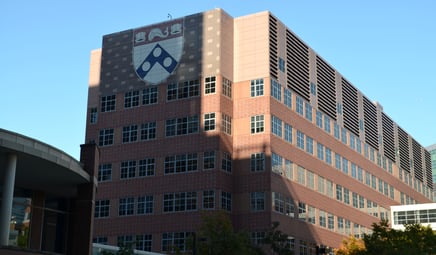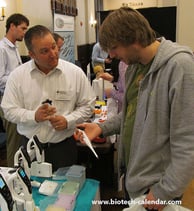The University of Pennsylvania was established in 1740. It became the home to the nation’s first hospital and medical school, which were both founded by Benjamin Franklin. Now a new chapter in Penn Medicine’s history is about to begin. Construction of the New Patient Pavilion started in September of 2016. This new 13-story medical building will include 500 inpatient rooms as well as a relocated and expanded Emergency Department.

(Image of UPenn Research Building courtesy of Wikimedia Commons)
This 1.5 million square foot project is meant to serve as a campus hub for Penn Medicine. It is being built at the site of the Former Pen Tower at 1 Convention Ave, which was recently demolished. The PennFIRST design and construction management team is working closely with Penn Medicine and Penn staff to design from the patient and caregiver's perspective.
However, the urban design perspective is certainly not being ignored. The structure itself is meant to serve as an architectural accent to the skyline of the UPenn, Philadelphia. The rounded building, designed by Foster+Partners, has aluminum paired with glass to create a golden shimmer both day and night.
Cost of the project is estimated at $1.5 billion. Construction is expected to be completed by the end of 2020. Fitting the New Patient Pavilion with the necessary equipment and general lab supplies will take a few months. Occupancy of the medical building is therefore projected for Spring of 2021.
As the new hub for Penn Medicine, the New Patient Pavilion will have connection points with the Hospital of the University of Pennsylvania and the Perelman Center for Advanced Medicine. This esteemed hospital which was founded in 1874 was recently ranked #9 in the nation by U.S. News & World Reports. It has 776 beds and is affiliated with the University's Perelman School of Medicine, which offers over 20 Biomedical Research Core Facilities. One of these is the CRISPER Cas9 Mouse Targeting Care, which has significantly improved the process of genetically engineering mice so scientists can test their hypotheses more precisely. Another core service available to life science researchers is the Penn Genomic Analysis Core, which includes the DNA Sequencing Facility and Molecular Profiling Facility.
The Perelman Center -- a $302 million facility--was designed to create an ideal environment for patient-focused care and collaboration among health professionals. The Perelman Center is home to Penn Medicine's Abramson Cancer Center, radiation oncology, cardiovascular medicine and an outpatient surgical pavilion.
The UPenn is home to 137 research centers and institutes. As of fiscal year 2017, the research community includes over 4,400 faculty, over 1,100 postdoctoral fellows, and over 5,500 academic support staff and graduate student trainees. The research budget is nearly $1 billion. University of Pennsylvania is ranked 10th in Life Science R&D Expenditures with $655,541,000 spent. UPenn received $478,866,008 in NIH Funding in 2016.
Laboratory Product Suppliers Meet with Penn Medicine Staff and UPenn Researchers:
Laboratory suppliers interested in increasing their lab product sales in 2017 should plan on attending the 18th Annual BioResearch Product FaireTM Thursday, May 11, 2017. There they will meet face to face with Penn medical staff and UPenn researchers. Call Biotechnology Calendar, Inc. at (530) 272-6675, or click the link below, for more information about exhibiting at the upcoming biotech trade faire held on the UPenn, Philidelphia campus.
Life science professionals are invited to attend this event for free and will enjoy this opportunity to see the latest in lab supplies and technology. Click the button below for additional information and to pre-register.




